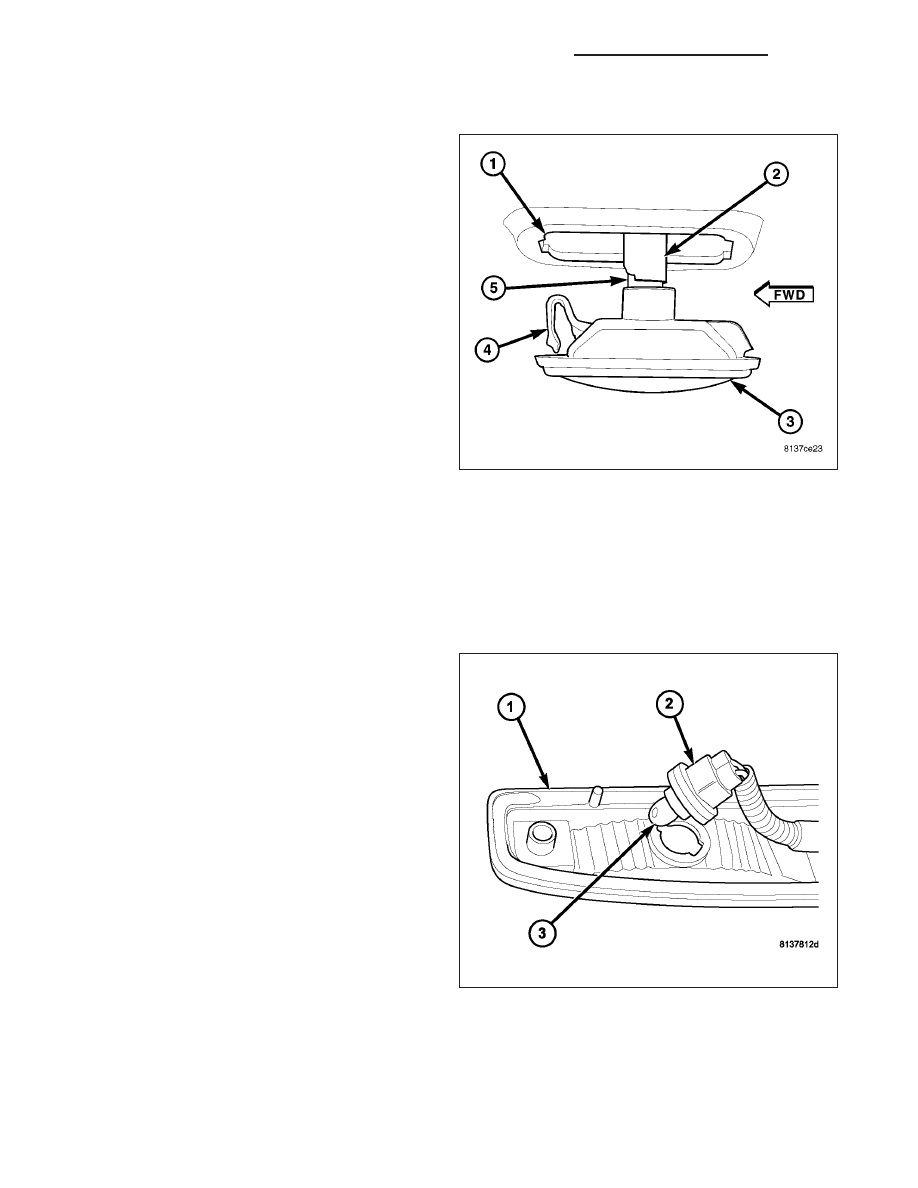Dodge Ram Truck 1500-2500-3500. Manual - part 436

LAMP - REAR FENDER
NOTE: These lamps are used on pick-up models
with dual rear wheels. A lamp with an amber lens
is located on the rear fender ahead of each rear
wheel opening, and a lamp with a red lens is
located on the rear fender behind each rear wheel
opening. The service procedures are identical for
all four of these lamps.
1. Position the marker lamp (3) close enough to the
mounting hole (1) to access and reconnect the wire
harness connector (2) to the bulb socket (5) on the
back of the lamp lens/housing.
2. Engage the retaining clip (4) on the front edge of
the marker lamp into the front edge of the mount-
ing hole in the rear fender.
3. Using hand pressure, press the rear edge of the
marker lamp lens/housing toward the front of the
vehicle against the spring pressure of the retaining
clip, then push the rear edge of the lamp into the
rear of the mounting hole in the rear fender.
4. Reconnect the battery negative cable.
BULB - TAILGATE
CAUTION: Always use the correct bulb size and type for replacement. An incorrect bulb size or type may
overheat and cause damage to the lamp, the socket and/or the lamp wiring.
NOTE: This lamp is used on pick-up models with
dual rear wheels. A lamp with a red lens and con-
taining three bulbs is located on the outside of the
tailgate below the tailgate latch release handle.
The bulb types and service procedures are identi-
cal for all three of these bulbs.
1. Align the base of the bulb (3) with the socket (2).
2. Push the bulb straight into the socket until the base
is firmly seated.
3. Align the socket and bulb with the keyed opening
on the back of the tailgate marker lamp lens/hous-
ing (1).
4. Insert the socket and bulb into the housing until the
socket is firmly seated.
5. Rotate the socket clockwise about 30 degrees to
lock it into place.
6. Position the marker lamp to the outer tailgate
panel.
7. Install and tighten the two screws that secure the marker lamp lens/housing to the tailgate panel. Tighten the
screws to 1 N·m (11 in. lbs.).
8. Reconnect the battery negative cable.
8L - 150
LAMPS/LIGHTING - EXTERIOR - SERVICE INFORMATION
DR/DH